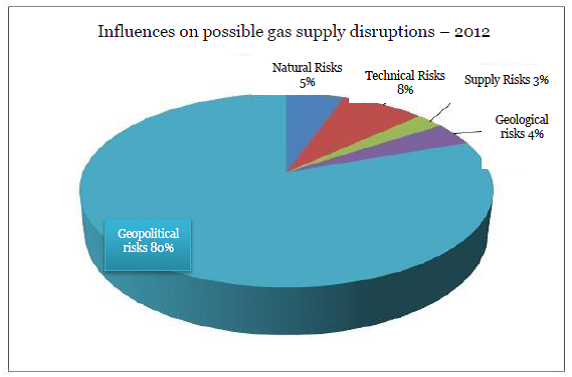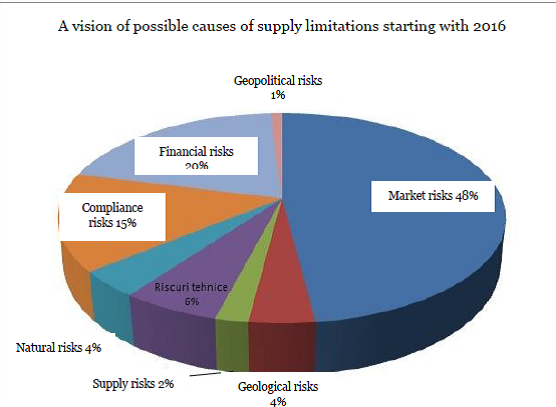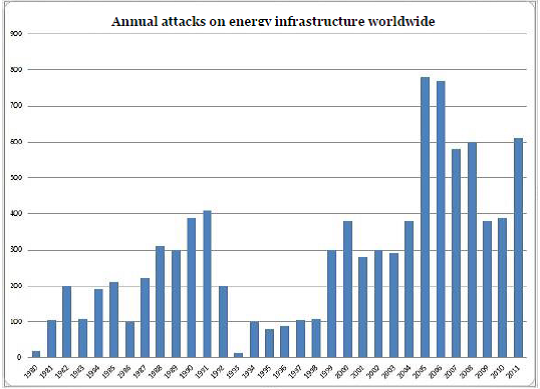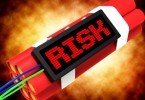Home / Natural Gas /
The major risks of the past have disappeared, new risks are looming in gas supply security
by Dumitru Chisalita
The greatest risk in Romania’s gas supply security during winter was represented, until 1-2 years ago, by possible disruptions in Russian gas supply. Currently, this risk has disappeared. In January 2012, gas imports (direct and stored) reached around 65% of the daily consumption demand, while today they account for around 3%. In a study conducted in 2012, I identified 5 possible influences on gas supply disruptions and the greatest share was represented by geopolitical risks.
Geopolitical risks. I categorized these risks as coming from the change of geopolitical, diplomatic, commercial or military relations in a certain geographic area, causing: interrupted gas imports from the Russian Federation, interruption of as transmission in intermediary transit countries, diplomatic incidents, commercial misunderstandings etc.
Natural risks. I categorized this category of risks as being mainly caused by natural phenomena: earthquakes, extreme temperatures, floods, fires, landslides, storms, massive snowfalls, frost etc.
Technical risks. I categorized this risk category in: explosions, fires, accidents, use of outdated technology, unavailability of personnel (e.g. caused by a pandemic), errors of operations personnel, errors in action of third parties, vandalism, malfunctions related to production and underground storage infrastructure(transmission, distribution, installation), failure of information systems (software and hardware), failures of the utility systems (electricity, water), failure of communications systems, theft of equipment or critical parts of equipment, natural gas quality. Supply risks. The cost and availability of spare parts, materials and consumables that can be affected by a poor management, strikes, bankruptcy or technological changes, unavailability of workforce, protests, bankruptcy of suppliers, improper procurement and supply management, lack of forecast on supply demand.
Geological risks. Risks derived from the modality of exploration and interpretation of geological results of structures, which can lead to limitations of supply in the short, medium and long term: difficulties in extraction, field depletion etc. While risks presented are risks faced by Romania in the past 25 years, their measurement (impact, probability) being so far based on historic events, the present and especially future risks are no longer risks deriving exclusively from the history of events. I believe that Romania will face new risks: market risks, financial risks, compliance risks and the risk of terrorist actions.
Market risks. The main risk source causing the apparition of this category is represented by the fact that demand for goods and services of companies in the sector is influenced by customer reaction to these products and services: lack of predictability in the Romanian gas market (quantities, price), imbalance between supply and demand, energy poverty, oligopoly in the domestic production market, monopoly in terms of import sources, bankruptcies, insolvencies, arrears etc.
Financial risks. Caused by resources needed to ensure and maintain the capital of an organization in the gas sector. Coping with risks depends on government policy reflected in changes in interest rates, exchange rate, level of taxes and charges: unpredictability of exchange rate, unpredictability of taxes and charges, payment delays, limited and expensive guarantee instruments.
Compliance risks. Risks deriving from the obligation to comply with laws and other regulations, which, whether observed or not, can lead to supply limitations: lack of medium and long-term strategy, lack of legislative stability (primary and secondary legislation), situation of land and site access, failure to correlate the adjacent infrastructures etc. The new risks caused by changes in the past 10 years at global and European level, which have also occurred in Romania, are difficult to identify and predict, as probability and impact, due to absence of history elements.
Risks of terrorist attacks. In Romania they are not considered likely; if they existed and they were focused for example on storage extraction capacity, they could cause an important limitation of gas supply, probably much superior to all the other risks. Taking a look behind, we see that the number of attacks on energy infrastructure has doubled in the last 20 years, reaching an average number of 300 attacks per year, respectively 10,000 attacks in 20 years, according to statistics presented at the Energy seminar spotlights security, critical infrastructure, organized by George C. Marshall European Center for Security Studies. The same statistics show that mainly the attacks have been conducted against oil and power infrastructure, but other energy production infrastructures haven’t been spared either.
The way in which these attacks have been conducted is very different, almost no form of terrorist attack being absent.
These elements show that energy infrastructure is a target of terrorists, that attack means are unlimited, but also show that areas that had been considered safe have suddenly become terrorist targets, while in areas where in the previous years there had been numerous such attacks the number of attacks has been reduced in the meantime.
The elements presented highlight that the idea of safe area is relative and Romania should also take into account this risk category and find the means to prevent it. The dynamics of the complex energy market, complicated by market liberalization, privatization, listing of energy companies and the geopolitical, social and economic situation, cause the continuous change of risks and prompt another vision on the energy security issue. (dumitruchisalita.ro, January 11th)
Image courtesy of Stuart Miles at FreeDigitalPhotos.net






Recent Comments